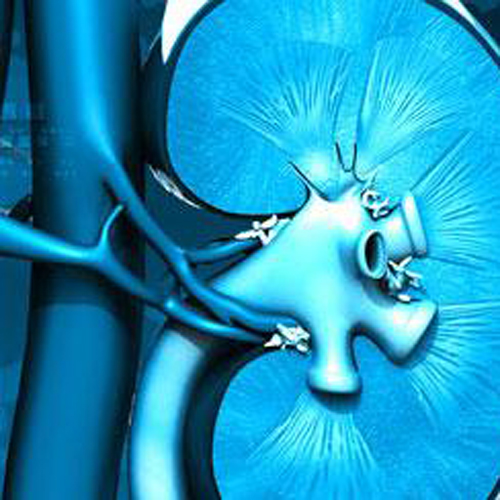AKI and ARDS – Brothers in Crime!?

Impact of Early Acute Kidney Injury on Management and Outcome in Patients with Acute Respiratory Distress Syndrome: A Secondary Analysis of a Multi-Center Observational Study
McNicholas, B.A., Rezoagli, E., Pham, T. et al. Crit Care Med (2019) 47(9):1216
Multi-organ dysfunction is frequent in critically ill patients. The readers are certainly aware of the fact, that Acute Kidney Injury (AKI) leads to higher morbidity and mortality, especially with increasing severity of AKI. However, the impact of AKI in patients with Acute Respiratory Distress Syndrome (ARDS) was more or less unclear.
In a secondary analysis of the LUNG SAFE study, McNicholas et al. aimed to explore the association between mild-moderate and severe AKI and ARDS. The LUNG SAFE study was a global, multicentre, prospective cohort study, enrolling nearly 4,500 patients with Acute Hypoxic Respiratory Failure (AHRF).
The secondary analysis by McNicholas et al. included mechanically ventilated patients, which fulfilled ARDS (Berlin) criteria on day 1 or day 2 or AHRF. AKI was not defined according to KDIGO, but rather patients were grouped by variant definition, namely highest serum creatinine (<1.49 mg/dl – no AKI; 1.49-4.0 – mild-moderate AKI; >4.0 – severe AKI) or lowest urine output (≥ 0.5 ml/kg/h – no AKI; ≥ 0.3 <0.5 mild-moderate AKI; < 0.3 severe AKI) on days 1 and 2 of ARDS.
According to these criteria, 1,947 patients were analysed. 61% had no AKI, 24% had mild-moderate AKI and 15% had severe AKI.
In patients who developed AKI, some influences on morbidity and mortality were noted. PaO2/FIO2-ratio was lower in patients with AKI than in patients without and pH became lower with increasing AKI-severity.
Patients with mild-moderate and severe AKI had longer duration of invasive mechanical ventilation and patients with severe AKI had longer ICU stays. Hospital mortality was 30.8% for patients without AKI. In patients with mild-moderate AKI it was 49.9% and for patients with severe AKI it was 57.6%.
STUDY STRENGTHS & LIMITATIONS
While this study included a large number of patients, its nature as a secondary analysis of a prospective cohort study is clearly a limitation that must be noted. Also, the use of a variant definition of AKI – especially with a fixed definition for serum creatinine, which does not conform with the KDIGO definition – is a drawback. Furthermore, AKI was only classified on days 1-2.
While negative influences of AKI in patients with ARDS were observed in this analysis, it is difficult to draw direct conclusions of this study, as many different influences on AKI, ARDS and generally multi-organ dysfunction exist in these critically ill patients. Patients with worse ARDS are commonly more severely ill, which itself could cause worsening AKI and vice-versa.
TAKE HOME MESSAGE
- AKI in ARDS patients poses a serious problem, as its effects especially on hospital mortality cannot be ignored. Therefore, nephron-protective measurements should routinely be employed in patients at risk of AKI and/or ARDS, as recommended by the KDIGO AKI guidelines and more recent publications (Joannidis et al. 2017, Joannidis et al. 2019)
This article review was prepared and submitted by Sebastian J Klein, Division of Intensive Care and Emergency Medicine, Department of Internal Medicine, Medical University Innsbruck, Innsbruck, Austria, on behalf of the ESICM AKI Section and the Journal Review Club.
REFERENCES
1) Impact of Early Acute Kidney Injury on Management and Outcome in Patients with Acute Respiratory Distress Syndrome: A Secondary Analysis of a Multi-Center Observational Study. McNicholas, B.A., Rezoagli, E., Pham, T. et al. Crit Care Med (2019) 47(9):1216.
2) Epidemiology, Patterns of Care, and Mortality for Patients With Acute Respiratory Distress Syndrome in Intensive Care Units in 50 Countries. Bellani, G., Laffey J.G., Pham, T. et al. JAMA (2016) 315(8):788
4) Prevention of acute kidney injury and protection of renal function in the intensive care unit: update 2017Joannidis, M., Druml, W., Forni L.G. et al. Intensive Care Med (2017) 43(6):730
5) Lung–kidney interactions in critically ill patients: consensus report of the Acute Disease Quality Initiative (ADQI) 21 WorkgroupJoannidis, M., Forni, L.G., Klein, S.J. et al. Intensive Care Med (2019).
6) Lunge-Nieren-Interaktionen bei kritisch KrankenKlein, S.J., Husain-Syed, F., Karagiannidis, C. et al. Med Klin Intensivmed Notfmed (2018) 113: 448.